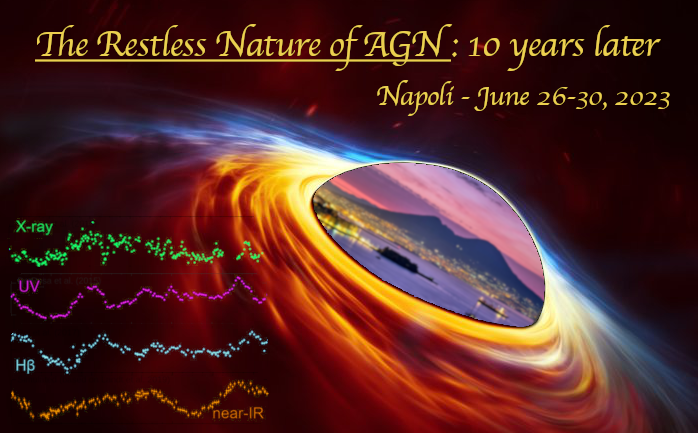Speaker
Description
In the present era of astronomical surveys, multi-wavelength studies are gaining ground. Active galactic nuclei (AGN), powered by the accretion of matter onto their central supermassive black hole, emit over a broad range of wavelengths from the X-ray to radio. Therefore, exploring AGN at multiple wavelengths is critical to understand the energetics of these powerful engines. Because AGN appear point-like (angular sizes of μarcseconds), the time-domain technique of reverberation mapping (RM) is applied to map their inner regions. RM utilizes the variability timescales between different continuum wavelengths ('accretion-disk RM') or between the continuum and nearby gas in the broad-line region ('broad-line region RM') to infer the size scales of AGN. AGN sizes combined with broad-line gas velocities yield masses of the central black holes in these objects. Despite decades of efforts, the key question of 'How do supermassive black holes grow over cosmic time?' remains unsolved. Investigating a significantly large sample of AGN spanning a breadth of redshifts and luminosities is important for constraining the history of black hole growth over cosmic time. We aim to design a large-scale AGN RM campaign with the Cosmological Advanced Survey Telescope for Optical and ultraviolet Research (CASTOR) to obtain black hole masses in a large AGN sample over a wide luminosity-redshift space with imaging and slitless (grism) spectroscopy. CASTOR is a Canadian flagship ultraviolet (UV) mission proposed to the Canadian Space Agency. UV is essential because it probes the AGN ionizing continuum; additionally, AGN are more variable and vary on shorter timescales in the UV than in the optical and infrared. With CASTOR, we will probe black hole masses in a unique phase space of redshifts and luminosities as compared to all previous RM studies. Furthermore, synergies between CASTOR and future ground-based facilities such as the Vera C. Rubin Observatory and the Maunakea Spectroscopic Explorer will allow expanding the science outcomes of CASTOR AGN surveys to longer wavelengths in the optical and infrared. In my talk, I will cover how we are planning large-scale AGN RM surveys with a survey simulation tool and show synergies between CASTOR and next-generation ground-based observatories.

